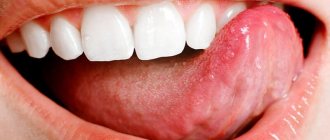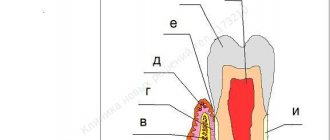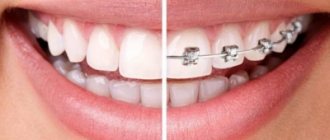The tongue is an organ that not only helps us enjoy food and conversations; its structure and functionality allow specialists to identify many diseases of patients. For example, problems with the heart and lungs are projected onto the area of the top of the tongue in the form of redness and cracks, the surface of its back allows us to judge diseases of the liver and spleen, the root of this organ tells about problems with the stomach, and the side areas about the condition of the kidneys. Therefore, in case of any painful conditions, it is worth contacting a specialist to clarify the problem. There are several doctors whom you can contact in case of suspicious conditions of our speech organ. By the nature of the plaque, smell, color, and patient complaints, the doctor can identify various, often deeply hidden diseases and determine whether there is a certain pathology.
Which doctor should I contact?
Almost all internal problems leave a mark on the tongue, especially if they are associated with microflora (this includes staphylococci, spirochetes, fungi, streptococci). In a painful condition, there is usually an infection in the form of fungi, viruses, and bacteria. Independent diseases of the tongue, independent of internal pathologies that cause the inflammatory process, do not appear often; they are mainly associated with other organs, which makes it possible to identify internal problems that have not yet manifested themselves.
- Dentist: the tongue may hurt, burn, and disturb the mucous membrane, in cases associated with teeth and gums. It can rub the denture, cause inflammation of a bad tooth, incorrect filling, periodontal disease, and so on.
- Otolaryngologist, or simply ENT doctor. He will examine the oral cavity and larynx for sore throat, tonsillitis and other inflammatory diseases.
- Therapist. If there are no obvious reasons, you can go to him first. The doctor will try to determine what the problem is and, if necessary, refer you to a specialist or for tests.
- Endocrinologist. Sometimes these diseases may well be the result of a malfunction of the endocrine system.
Choosing a specialist depending on symptoms
Which specialist will help eliminate the emerging disease?
- Consultation with a periodontist is needed when the periodontal tissues are damaged, with pathologies of the gums, ligaments, bones, where the root of the causative unit is located. If the patient undergoes regular preventive examinations, the risks are minimized.
- When the disease is caused by vitamin deficiency, you should visit a therapist. If the speaking organ trembles, a stroke or heart attack can be suspected. The problem is dealt with by therapists and cardiologists.
- If your tongue hurts due to stomatitis, make an appointment with the dentist. He will prescribe appropriate treatment.
- When a case of illness is associated with improper functioning of the digestive system, consultation with a gastroenterologist will be required.
- In case of glossalgia, the patient will be referred to a neurologist.
- An infectious disease specialist can handle diseases caused by infections.
Ailments of the muscular organ and oral mucosa are often caused by injuries, inflammatory processes, in particular of the lymph nodes, anemia, allergic reactions, lichen, glossitis, and damage to nerve endings. Do not self-medicate, consult a doctor in a timely manner!
Symptoms
Very often, symptoms can tell you which doctor you need to see if you first pay attention to the condition of the tongue. For example:
- Pallor may be caused by taking a course of antibiotics or vitamin deficiency;
- Trembling may indicate multiple sclerosis and stroke;
- When cultured, a curdled coating will indicate candidal stomatitis;
- Purple color signals disorders of the circulatory system;
- Swelling of the back of the tongue on the right is characteristic of liver dysfunction, on the left - the work of the spleen;
- Dry cracks appear in diseases of the stomach;
- Yellow-green color signals an exacerbation of peptic ulcer disease;
- The tongue has become less mobile;
- Worried about irritation and itching;
- There is an unpleasant odor;
- Weeping erosions have occurred;
- Cracks, swelling, spots appeared.
Tongue diseases can be caused by injuries, enlarged lymph nodes, inflammation due to infection, malignant formations, allergic reactions, anemia, viral ulcers, glossitis, lichen, smoking, alcohol, etc. A separate conversation about the fashionable piercing today, the consequences of which can bring a lot of concern . For example, during the procedure, nerve endings may be damaged; when the puncture is not performed correctly, pathogenic microbes may enter the wound, which will lead to inflammation and suppuration. An allergic reaction to the metal may also occur.
Acute glossitis
Here you need to explain in more detail which symptoms require urgent medical attention. There are many types of glossitis, and often their symptoms are similar.
- Catarrhal glossitis is manifested by inflammation of the mucous membrane with swelling and redness. Caused by bacteria, a complication of candidal stomatitis, smoking, acute respiratory infections, influenza, alcohol, caries, and can signal gastrointestinal diseases.
- Ulcerative: It can be recognized by a dark gray plaque, bleeding ulcers and an unpleasant odor from the mouth. It signals ulcerative necrotic stomatitis and especially develops with decreased immunity.
- Abscess: develops in case of injury to the tongue, it swells, turns red, becomes painful, breathing may be difficult, and swelling increases.
- Mycotic: if a white cheesy coating appears on the back of the organ, this indicates mycotic glossitis; it appears when immunity is reduced.
- Desquamative: signals problems with the circulatory/digestive system, kidney disease, dysbacteriosis, metabolic disorders. It manifests itself as itching and burning, mild soreness, and red polishing spots.
- Herpetic glossitis: against the background of acute respiratory infections, hypothermia and stress, it is visually manifested in the appearance of bubbles on the mucous membrane, which, when bursting, turn into painful ulcers. The temperature rises, the head hurts, joint pain torments.
With glossitis, the tongue hurts and burns, tissues swell, speech becomes difficult, salivation is impaired, and it becomes difficult to chew food.
Chronic glossitis
It also manifests itself in several forms:
- Folded: it is characterized by multidirectional folds and is often hereditary.
- Rhomboid: Appears as a diamond-shaped area of inflammation protruding at the base, with a smooth, red texture.
- “Geographical”: starting with a small gray spot, it grows over time, the spots partially merge, foci appear among them, the surface looks like a map, there is almost no pain.
- “Black hairy” tongue: causes sensations of a foreign body in the mouth due to the proliferation of filiform papillae, their appearance darkens to black. Smoking, alcohol, and germs can cause the problem.
- Leukoplakia: thickening of the mucosa, predominantly affects men over 50 years of age. It can be caused by smoking, injury, inflammation, and can be hereditary. People infected with HIV develop a special, “hairy” leukoplakia, recognized as an early symptom of AIDS.
If glossitis is suspected, bacterial culture is usually performed, after confirmation of the diagnosis, rinsing with antiseptics is prescribed, anesthetics are used for pain, and herbal rinsing is used for mild inflammation. When it comes to phlegmon of the tongue, they resort to the help of a surgeon when the necrotic tissue is removed.
How to treat candidal glossitis - causes, symptoms, treatment methods
Glossitis is an inflammation of the tissues of the tongue, which can be either an independent disease or a symptom of another pathology.
Read on to learn more about the causes of folded glossitis in children, diagnostic methods and treatment therapy. Classification of glossitis:
- diamond-shaped (median);
- desquamative;
- deep;
- folded;
- Gunter's;
- interstitial.
In addition, a distinction is made between chronic glossitis and acute glossitis with pronounced symptoms.
Treatment
All of the above diseases of our speech organ have similar symptoms, characterized by plaque, redness, swelling, changes in color, shape and erosion. And only a specialist can determine what kind of disease has affected this organ, after conducting a series of studies. Therefore, based only on the described symptoms, you should never self-medicate, which can significantly worsen the condition and complicate the recovery process.
Usually, ointments (painkillers, antifungals), antiseptic solutions, and wound healing agents are used. For viral diseases, general treatment is added to local treatment.
Diseases of the tongue can indicate to a specialist internal diseases that have not yet discovered themselves. Find out which doctor treats tongue and seek help for any of the above symptoms.
Consultations with a doctor online Taking care of your health is a life priority for everyone.
Communicate with doctors online and receive qualified assistance without leaving your home. Try it Please note! The information on this page is provided for informational purposes only. To prescribe treatment, you must consult a doctor.
Glossitis in children
This disease, like geographic tongue, is diagnosed quite often in children. The pathology, as a rule, is asymptomatic and is detected accidentally during examination for another disease.
Causes of glossitis in children:
- violations of personal hygiene rules;
- the body's reaction to the dental filling material;
- eating hot or cold food;
- helminthic infestation;
- gastrointestinal diseases (diamond-shaped glossitis);
- infectious and colds.
- atopic dermatitis.
Pain due to inflammation of the salivary glands
In cases where a person feels pain on both sides of the tongue, the cause may be inflammation of the sublingual salivary gland. It arises as a result of:
- Complications of another disease (inflammation of the tonsils, acute respiratory viral infections, anemia, vitamin deficiency, dental diseases);
- Insufficient hygiene;
- Obstruction of salivary flow caused by stones or pathogens.
The main symptoms indicating inflammation of the salivary gland:
- Dry mouth – it always seems like there is not enough saliva;
- Pain that is observed not only under the tongue, but also in the ear area;
- Redness of the mucous membrane, thickening or swelling under the tongue;
- Putrid taste.
If you observe such signs in yourself, you should immediately go to the dentist and undergo a course of therapy. Otherwise, an abscess may develop or the disease may become chronic.
If you have a problem similar to that described in this article, be sure to contact our specialists. Don't diagnose yourself!
Why you should call us now:
- We will answer all your questions in 3 minutes
- Free consultation
- The average work experience of doctors is 12 years
- Convenient location of clinics
Single contact phone number: +7
Make an appointment
Benign tumors of the tongue
The clinical course of a tongue tumor and the characteristics of its growth are associated mainly with the type of tissue from which it originates. The presence of epithelial, muscle, glandular, and adipose tissue in the tongue structure, as well as the possible entry into the tongue tissue during embryogenesis of the rudiments of other tissue structures (bone, cartilage, thyroid tissue) determine a wide variety of clinical forms of tongue tumors. Most often dentistry encounters vascular tumors of the tongue (angiomas). The second place in prevalence is occupied by papillomas, the third place by fibroids of the tongue.
Papilloma . This tumor of the tongue grows from the stratified squamous epithelium of its mucosa. Most often it occurs on the back and tip of the tongue. Papillomas are multiple or single formations of pale pink color, round or elongated, rarely growing to large sizes. The appearance of keratosis on the surface of the papilloma, as a rule, indicates its malignant degeneration. In some cases, spontaneous involution of papilloma was observed.
Adenoma . Formed from the glands of the tongue mucosa. Cystoadenomas are more often observed on the tip of the tongue. In the area of the root of the tongue, polyps from the heterotopic gastric mucosa may appear.
Botriomyxoma . The tongue tumor is flat or spherical in shape, in rare cases divided into several lobules. Initially it is red in color, but over time it becomes brown. In its growth it can reach the size of a walnut. The surface of botryomyxoma can be smooth or coarse-grained, often covered with crusts. Factors that provoke the formation of this type of tongue tumor include trauma and tongue fissure.
Fibroma . A round tumor of the tongue of elastic consistency, growing from connective tissue cells. Fibroids can grow on a stalk. Its color often does not differ from the color of the mucous membrane, in other cases it has a yellowish or whitish tint.
Retention cyst . Most often located on the lower surface of the tongue in the area of its tip. It has a multiple character. This tumor of the tongue develops from the nunnia glands located in its superficial muscle layer.
Lipoma . A tumor of the tongue developing in the submucosal layer with a lobular structure and a soft-elastic consistency. It is most common on the undersurface at the back of the tongue. Lipoma is characterized by slow growth and painless course.
Myoma . A tumor of the tongue that occurs when the cells of its muscles proliferate. It often has a size of up to 1 cm and a dense consistency, but can grow to a significant size. Covered with mucous membrane. It is usually localized on the upper surface of the tongue. In some cases, small papillary outgrowths are observed on the surface of the fibroid.
Neurofibroma . They develop from the tissues of the nerve branches passing through the tongue, most often in the posterior half of the tongue. This type of tongue tumor occurs in rare cases and is characterized by slow growth. May be accompanied by various pain sensations.
Hemangioma . Tumor of the tongue, originating from the tissues of blood vessels. Associated with a violation of embryogenesis, more often observed in girls. This tongue tumor is usually detected at birth or in early childhood. Capillary hemangioma appears as red spots of various sizes and shapes that do not rise above the surface of the tongue. The spot turns pale when pressed. Cavernous hemangioma is a tumor of the tongue with a bluish-purple color and soft consistency. Often rises above the surrounding mucosa. Characterized by deep germination into the underlying tissues. Pressure on the tumor leads to a decrease in its size, which quickly recovers when the pressure is removed. Vascular tumors of the tongue may be accompanied by bleeding, most often caused by injury.
Lymphangioma
. It grows from the walls of the lymphatic vessels of the tongue and appears in the first years of a child’s life. It can cause diffuse damage to the tongue, leading to its significant enlargement. Local lesions are represented by growths of a warty structure with vesicular elements and are most often located along the upper surface of the root or tip of the tongue. When injured by food or teeth, this swelling of the tongue often becomes inflamed.
Struma of the tongue . A rare tumor of the tongue that arises from cells of thyroid tissue that enter the tongue as a result of impaired embryonic differentiation. It is a node localized at the root of the tongue with a diameter of up to 3 cm.
Methods for diagnosing tongue cancer
The following diagnostic methods can be used to make a diagnosis:
- Physical examination. Helps identify the presence of abnormal areas. The doctor must examine the tongue, lips, cheeks, and palate. Additionally, a flashlight and a special mirror with a long handle can be used for research.
- Analysis for tumor markers of tongue cancer. Required to clarify the diagnosis.
- Endoscopy. A method of examination using a special device - an endoscope, which allows you to examine hard-to-reach body cavities.
- Biopsy. A study involving intravital sampling of tissue cells, which helps determine the type of cancer, predict its course and further prognosis for the patient.
- Cytology. Laboratory analysis to evaluate the structure and condition of cells.
- MRI, CT. Helps determine the true size of the tumor and plan surgical treatment.
- Bone scan. Helps to identify the spread of the inflammatory process in the areas of bone being examined.
- PET scan. Allows you to detect oncology at an asymptomatic stage.
At the first stage of diagnosing tongue cancer, a specialist doctor, for example, an oral and maxillofacial surgeon or oncologist, conducts a thorough examination of the patient, which begins with taking a medical history. The diagnosis process involves identifying all possible symptoms of the disease. Cancer is often hereditary, so doctors always pay attention to cases of cancer in close relatives.
How to treat candidal glossitis
During treatment, doctors recommend excluding salty, spicy, and hot foods from the diet, since high temperatures and irritating substances reduce the quality of treatment.
Antiseptic solutions, local anesthetics, healing agents, multivitamin preparations and herbal decoctions are the basis for conservative treatment of glossitis. In addition, it is necessary to normalize the functioning of the gastrointestinal tract and sanitize the oral cavity. Surgical treatment of glossitis is very rarely resorted to. Villous and phlegmonous glossitis may be indications for surgery.
Make an appointment with an experienced doctor and find out how to treat candidal glossitis and what traditional medicine recipes will help in this case. Reception is conducted by specialists with many years of experience.










